Some of you may recall me telling the story of when I was a kid and I would find immature carolina mantids late in the season. These would always have a large larva or maggot inside of them. Well lately I have found a few immature carolina mantids but their abdomens were not fat but instead they were skinny. The carolina mantids around here are laying ooths this time of year but these are still a couple molts away from adult.
I found some this past weekend and one died yesterday. I noticed today that the abdomen was split open just like one I had found dead in the wild. I then noticed several small maggots crawling around in the bottom of the enclosure. These came from this mantis and they explain the theory I have had that it was internal parasites causing their late development. I have a couple more and I am waiting to see if they have the same issue that may also explain their late stage of life this late in the season.
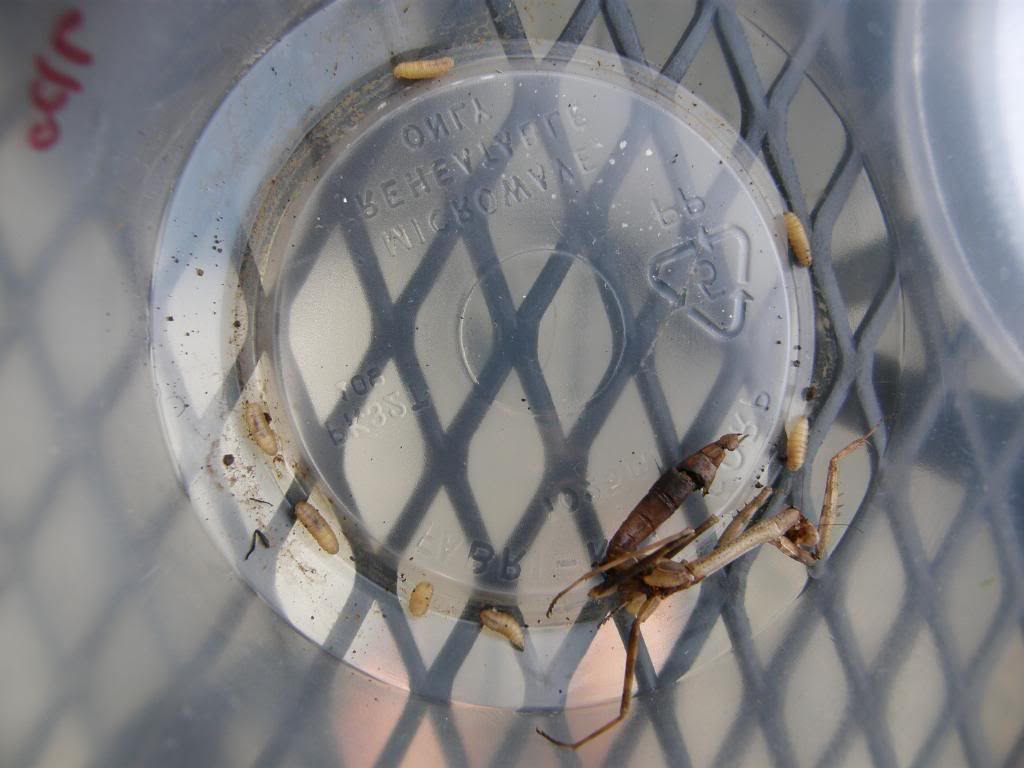
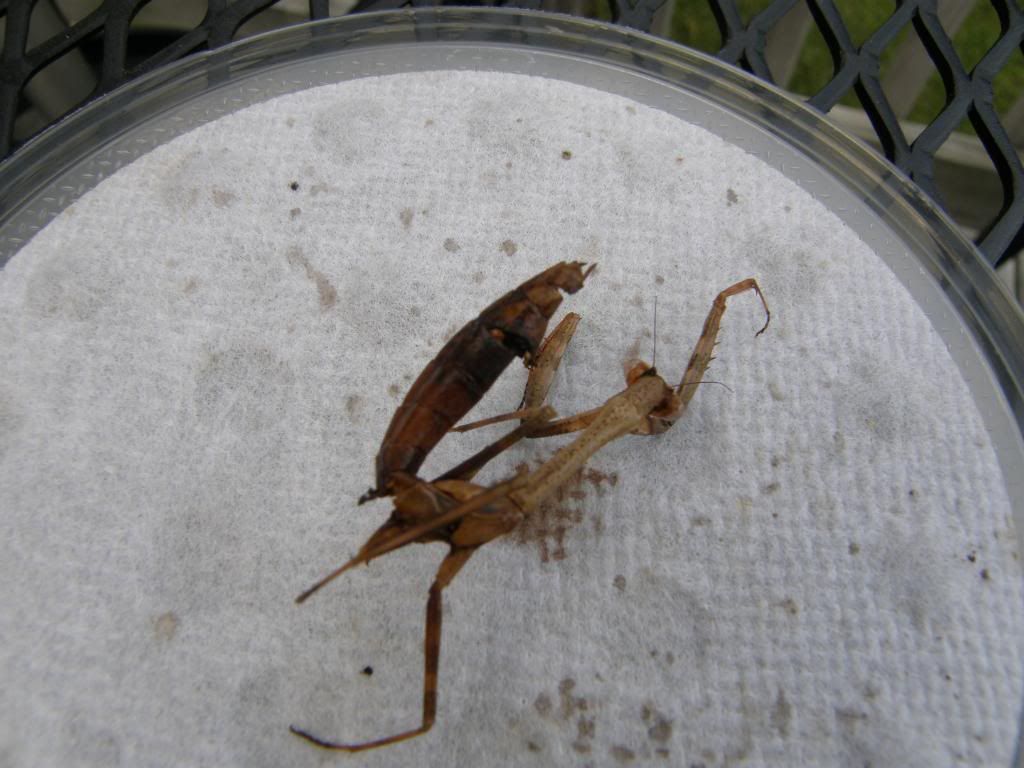
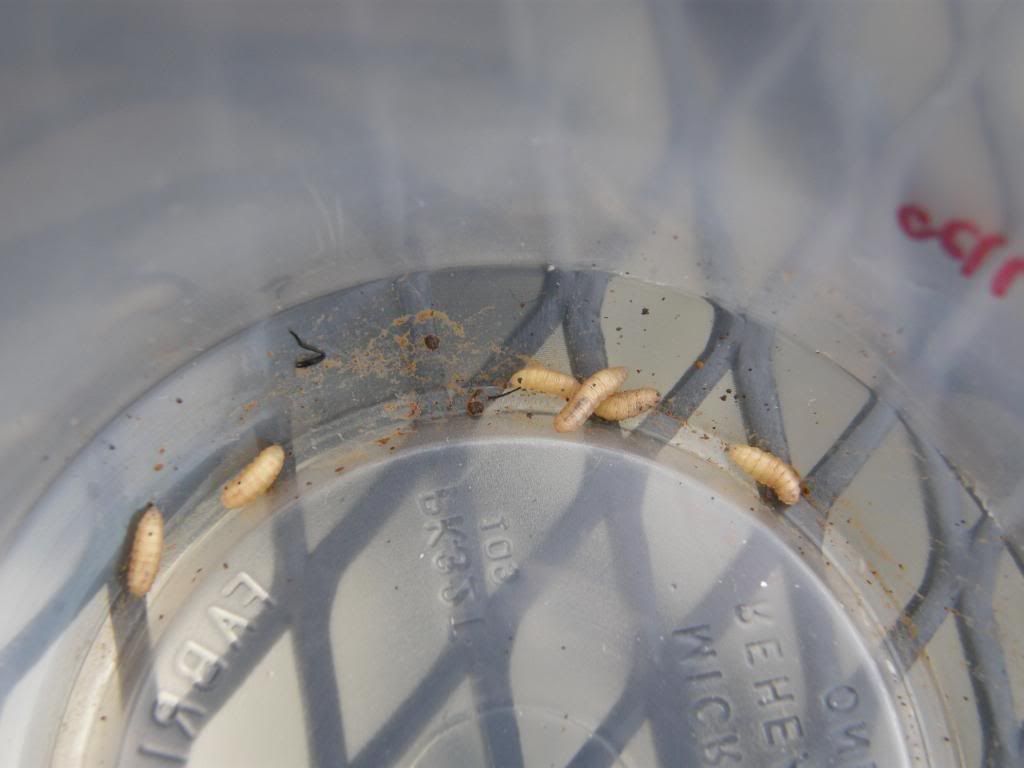
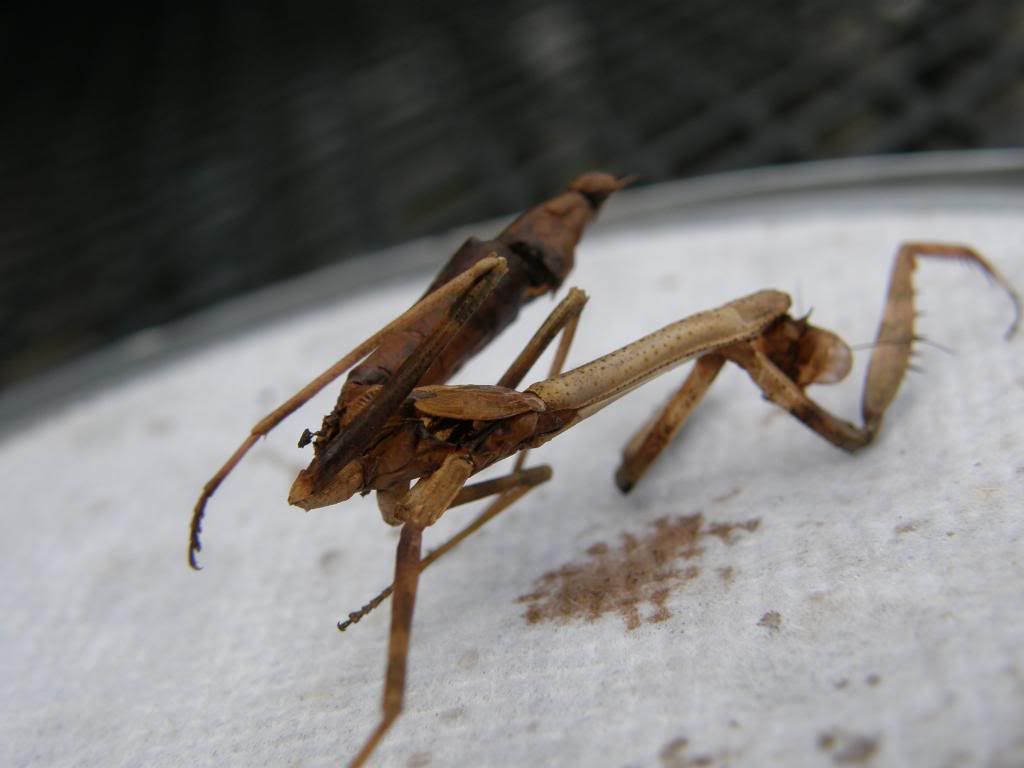
This my also explain this mantis. This one was adult though.
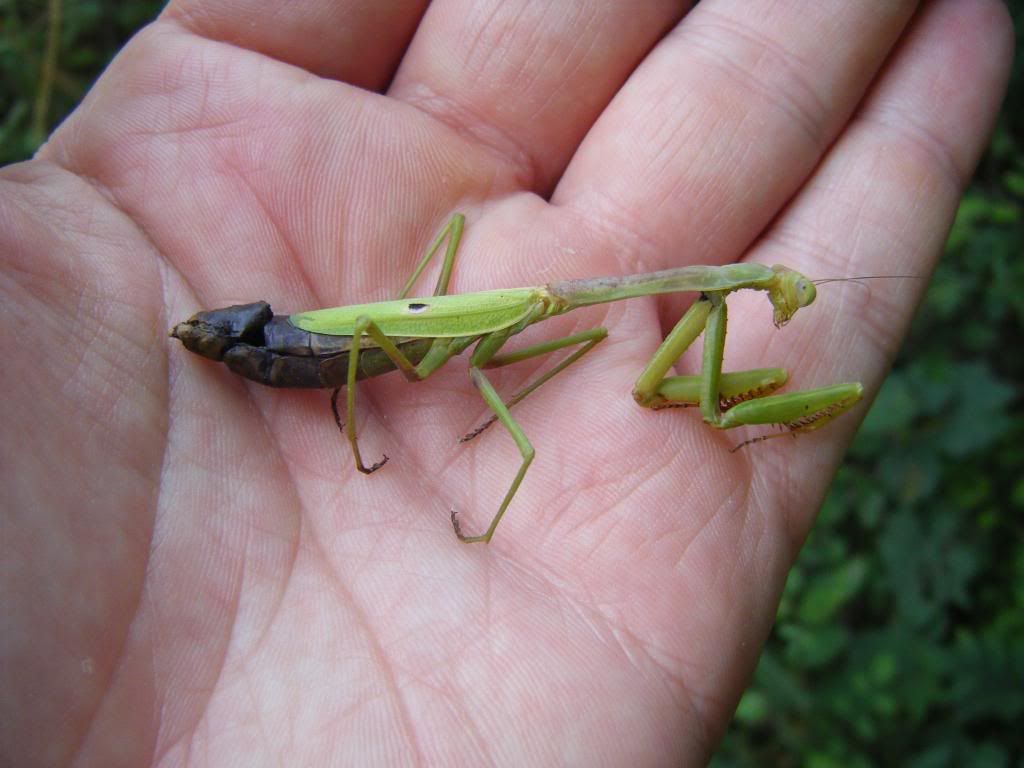
I found some this past weekend and one died yesterday. I noticed today that the abdomen was split open just like one I had found dead in the wild. I then noticed several small maggots crawling around in the bottom of the enclosure. These came from this mantis and they explain the theory I have had that it was internal parasites causing their late development. I have a couple more and I am waiting to see if they have the same issue that may also explain their late stage of life this late in the season.




This my also explain this mantis. This one was adult though.












































